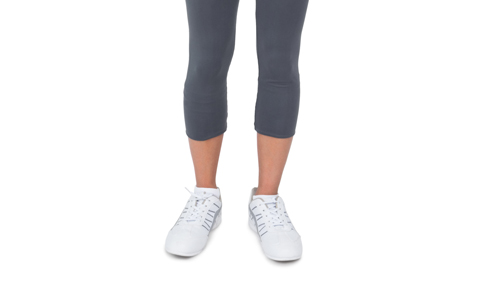
If you go to the doctor complaining of knee pain and the first thing he or she does is examine your feet, you might think your physician has misread your chart. However, your physician is actually doing something proactive to diagnose the reason for your knee problems. This is because knee pain is often directly related to the shape of your feet and the mechanics of your step. Think of the feet as the root of a tree. If the roots are damaged, the trunk and branches will suffer as well. The same is true of your body. When the arches of your feet are too low, you are commonly referred to as having “flat feet.” This is an appropriate term because weak arches cause your feet to literally flatten or turn inward as you walk or run.
If your feet turn inward, so do your knees, resulting in more pressure on the knee joints. And the problems do not end there – knee pain can lead to hip pain, which can lead to back pain, which can lead to headaches, neck pain and so forth. A 2011 study by the Boston University School of Medicine found that people with markedly flat feet had 1.3 times the odds of having significant knee pain and 1.4 times the odds of having cartilage damage in the knee joint. Luckily, there is a relatively easy fix for flat feet. Orthopedic inserts, worn in a pair of well-fitting supportive shoes, can do wonders for your foot positioning and posture. In addition, we can design a program of exercises to strengthen and stretch the ligaments and muscles in your feet to counteract the effects of flat feet. If sufficient damage has already been done to your knees, you may need extra therapy to relieve pain and discomfort. However, if flat feet are the only cause of your knee pain, improving your “walking posture” and step mechanics can make a significant difference in your gait and pain level.
















